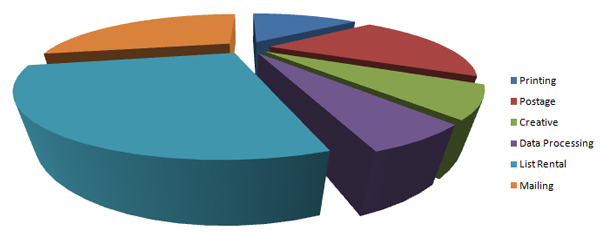I recently came across a direct mailing group post that caught my attention and received mixed responses from group members. The person wanted to know where to find statistics on how many people actually open and/or read their direct mail in order to justify statistically, the advantages of direct mail in both B2B and B2C environments.
Statistics vs. Results
Although many responders provided statistics based on surveys and published statistics such as those found in the Direct Marketing Association’s 2010 Edition Statistical Fact Book, the general consensus was that ROI in a direct mail campaign is best measured by response rates.
There are too many factors that affect the open/read rate of a campaign to measure in detail: design, copy, mailing objective, targeted audience, etc.
In my last post I wrote about the USPS Intelligent Mail Barcode Requirement which is taking place in May 2011 (update). Though in recent news we learned that the United States Postal Service took big loss, they have also implemented a combination of useful tools for direct marketers. These new tools allow for Direct Mail to be tracked from start to finish, sender to recipient.
Tools for Measuring Direct Mail Response
This information, whether regarding individual pieces or entire mailings, will be available online 24/7. Many new measurement aids like delivery dates, automatic address change and mailing list updating will reduce the amount of undeliverables. Business Reply Mail with payments or offer responses can be tracked on their way back to the original sender for response and cash-flow forecasting.

I am sure there will be more ingenious uses for the analytics Intelligent Mail Barcodes will provide, – and we will visit those uses in the future here on this blog – but what also must be mentioned is efficiency.
The efficiency of a direct mail campaign also affects ROI.
When calculating the return on investment, one has to factor in the cost of the campaign vs. the response; in monetary figures, this would then give us the amount of return, obviously.
Until now, direct marketers have used the practice of targeting mailings directly to interested parties as an alternative to static mass mailings in order to increase response rates and reduce campaign costs. Variable Data Printing gave us Personalized Mailings and USPS tools like N.C.O.A (National Change of Address) help to clean out lists as much as possible. Intelligent Mail Barcodes can be combined with these methods to further reduce the amount of undeliverable mail (which would throw off averages if measuring open/read rates).
ROI should be measured by first testing with targeted and relevant copy and design. With all the data centric tools made available, the ROI and efficiency of your direct mail campaigns should increase when these tools are used to your advantage.
Do you have any tips for measuring direct mail ROI or increasing results?
Please comment below..




3 Comments
Abigail
February 14, 2011.The format you choose sets up the way that your message unfolds and includes the size shape and layout of your Direct Mail piece.
Gerrys Blog » Blog Archive » Direct Mail Ideas That Are Sure To Get Attention
January 29, 2011[…] Measuring Direct Mail Response and ROI | Marsid M&M Group Blog […]
Tweets that mention Measuring Direct Mail Response and ROI | Marsid M&M Group Blog -- Topsy.com
January 19, 2011[…] This post was mentioned on Twitter by Christian Collard. Christian Collard said: Measuring Direct Mail Response and ROI: http://t.co/YYOpZma by @mmprint RT @arveycolumbus […]